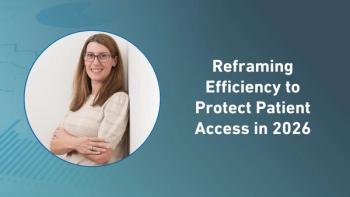Key takeaways
Automation must evolve into intelligence: Traditional automation has reached its limits—future-ready trials require self-adjusting, data-driven systems that can respond in real time.
AI integration demands a tech and talent upgrade: To enable self-optimizing trials, sponsors must modernize infrastructure and invest in hybrid roles that combine clinical and data science expertise.
Operational agility is now a competitive advantage: Sponsors that embed AI across operations—from protocol simulation to site performance—will unlock faster, more resilient trial delivery.
Over the past decade, artificial intelligence (AI) and automation have reshaped clinical research. From identifying drug targets faster to streamlining trial operations, the benefits have been real and measurable. Efficiency has improved. Workflows have accelerated. Manual tasks have been reduced.
But as clinical trials grow in complexity, scale, and scrutiny, those early gains are no longer enough. The industry is reaching a tipping point.
This has ushered in a new era, where trials can self-adjust in real time, learn from emerging data, and make proactive decisions without waiting on human intervention.
This is the promise of self-optimizing trials, and it’s closer than many realize.
Automation alone isn’t enough anymore
Modern clinical trials are pushing new boundaries. Today’s trials are larger in scale, more complex in design, and generate massive amounts of data. Yet with this ambition comes greater vulnerability.
Delays and disruptions are becoming the norm and not the exception, as operational models struggle to keep up. Protocol amendments frequently derail timelines and compromise data integrity. Recruitment and investigational product bottlenecks shift unpredictably across regions and populations. Meanwhile, the sheer volume of data often overwhelms human teams, making it nearly impossible to monitor and validate information effectively and in real time.
While automation has improved specific aspects of trial delivery, such as document review and site monitoring, most delivery models still depend heavily on manual interventions at critical decision points. Systems remain disconnected, making it difficult for data to flow seamlessly between platforms. And planning approaches are often static and linear, unable to adapt quickly to changing conditions.
The result? Trials are still prone to delays, cost overruns, and mounting compliance risks, particularly as regulators continue to move the bar on data integrity and oversight.
What if clinical trials could optimize themselves?
The future of trial execution is adaptive, predictive, and continuously self-improving.
Imagine a clinical trial where:
- Before a single patient is enrolled, a simulation engine identifies likely points of dropout and helps by offering edits to redesign the protocol in advance, avoiding delays and costly protocol amendments.
- As performance data streams in, resources shift automatically to mitigate the risk of underperforming sites. Root causes are efficiently identified with proportionate responses deployed to minimize impact and disruption.
- Data validation happens continuously in the background with AI catching anomalies or errors before they reach human reviewers or regulators.
- Opportunities to adapt the study such that endpoint data for promising sub-populations can be gathered more quickly, enabling expedited submission and Accelerated Approval while enabling the full study to continue.
This isn’t fiction, it’s already within reach for forward-looking sponsors. The shift from automation to intelligence is underway and it promises smarter decisions, faster pivots, and better outcomes.
Four steps pharma companies must take to enable self-optimizing trials
As with all clinical innovations, transformation does not happen overnight. They require strategic approaches to be implemented seamlessly and successfully. For pharma companies, there are four key steps to enable self-optimizing trials.
1. Develop and continually refine simulation models to predict disruption
Machine learning, combined with historical data, can be used to simulate trial behavior before it happens. This enables prediction on which sites are likely to fall behind, which protocol elements may trigger amendments, and how changes will cascade across the study. AI-powered foresight enables proactive decision-making before issues become costly delays.
2. Automate data validation to accelerate compliance
Manual quality checks can be replaced with intelligent validation engines. These tools can detect inconsistencies, flag missing data, and assess regulatory readiness in real time, enabling faster, cleaner submissions and reducing the burden on human reviewers.
3. Build an AI orchestration layer to enable real-time intelligence
Legacy systems were not designed for real-time optimization. Sponsors must modernize their tech stack to allow seamless data exchange between systems, from electronic data capture to clinical trial management system to eSource platforms. What’s further, sponsors must ensure their architecture supports AI-driven insights, not just static reporting. By developing a user-centric AI orchestration layer, clinical operations, data, safety, and monitoring teams can interact on a single view, with workbenches to drive action and push back to source systems thus maintaining systems or record while supercharging efficiency.
4. Embed AI into trial operations, not just strategy
AI isn’t just a planning tool; it needs to be woven into daily workflows. That means designing operations where AI-supported recommendations can influence site performance management, recruitment tactics, monitoring schedules, and protocol adjustments in real time. Full benefits will only be realized when AI investments are supported by an operating model that empowers and equips the future workforce to make best use of tools and methods created.
Shifting mindset from automation to intelligence
AI-driven transformation isn’t just about technology. It requires a shift in how trial teams operate—from periodic decision-making to continuous adaptation; from human-only oversight to human-AI collaboration.
The shift toward self-optimizing trials also creates new roles. From AI product owners to simulation analysts, these roles blend clinical expertise with data science fluency. Companies that invest in these hybrid skill sets now will be best positioned to lead tomorrow.
The future of trial execution is already here—but it won’t wait. Pharma leaders face the important choice between repeating the past with marginal gains and stepping into a future where trials run smarter, faster, and with greater resilience.
Self-optimizing trials aren’t science fiction. They’re already being piloted by forward-thinking sponsors. The competitive gap will widen quickly and those that wait may struggle to catch up.
Because in the next era of clinical development, the smartest trials won’t just be automated, they’ll be adaptive. They’ll learn. And they’ll optimize themselves.
Charlie Paterson, health and life sciences expert, PA Consulting





